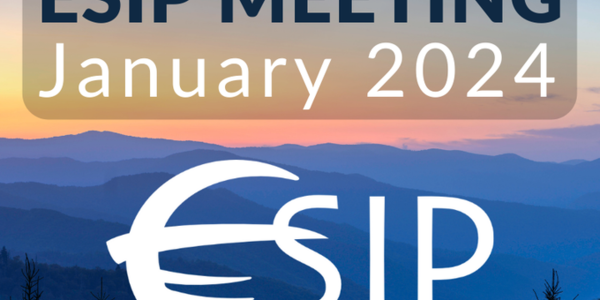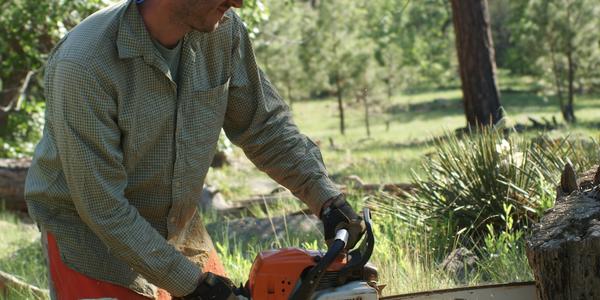
Here at NCEI, we aren’t just data—we are people. In our Humans of NCEI series, meet the awesome minds that manage one of the largest archives of atmospheric, coastal, geophysical, and oceanic research in the world. Get to know Chris Slater, a Lead Software Engineer who specializes in software development.
What is your job title?
Lead Software Engineer
What is your specific area of expertise?
Software Development.
What was your first job? How did it prepare you for your current position?
My first professional job was after college working dual duty as the sole IT support person and customer service specialist for a small computer game company in Eldorado Springs, Colorado. Working in customer service honed my people skills, which probably contributed to my ability to turn user requirements into architectural designs. As the sole IT professional I also had to be confident at solving problems on my own and often had to be creative with solutions for technical problems. These are valuable skills for a software engineer.
How did you end up at NCEI?
After getting my master's degree, I was a software engineer for a company focused on optimizing hospital billing. I then moved on to working in the identity management/security industry. I happened to come across a job posting for an enterprise software engineer for the Cooperative Institute for Research in Environmental Sciences (CIRES) and NCEI. After working in corporate environments for more than a decade, this looked like a great change of pace and I wanted to use my experience to do something beneficial for the world.
What does a usual workday look like for you?
My day usually starts with a stand-up meeting with my Marine Geology and Geophysics development team, making sure we are all in sync with our development tasks and have everything we need to complete them. The rest of my day is then split with checking up on application deployments and developing software. With the team, we work on many different software projects in 2 to 3-month blocks, including data ingest pipelines, web applications, and cloud-based data visualization applications.
What question are you asked most often when someone finds out what you do? How do you respond?
“How is Noah doing and how did he get all those animals on the ark?” But seriously, most people don't even know where to start asking about what I do. This gives me a great opportunity to list off all the cool projects I work on and talk about how great it is to be part of both NCEI and the University of Colorado.
What sort of training and education would one need for your job?
I have a bachelor's degree in Mathematics and Computer Science, and a master's degree in Computer Science. Both degrees are from the Colorado School of Mines. While my degrees provided a foundation for the skills I needed to be a software engineer, I learned a lot from experience and being allowed to try and fail. I've been lucky to have had several great mentors in my career that have understood the power of failure. Being afraid of failure hinders innovation. Something great can happen if novel ways of doing things are tried. If something new fails, well then I've learned something.
What inspired you to pursue a career in your field?
Ever since I was a little kid, I have been fascinated by machines and mechanical devices. I would often take apart my toys to see how they worked. When I went to college, I had planned on being a mechanical engineer. As part of my required courses, I took a C++ class and found out that I had a real knack for coding and really enjoyed working with computers. I changed my major to computer science and the rest is history.
What projects are you working on now? Are there any upcoming projects that you are excited about?
I work on many projects at NCEI and am excited about all of them. There is HazEL, a historical natural hazards database, and the GEBCO Gazetteer, a web application used by the Sub-Committee for Undersea Feature Names (SCUFN) to provide official names for undersea features. Then there is Trackline, a cloud-based data ingest pipeline for single-beam bathymetry data. EchoFish is also a cloud-based application used to visualize water column sonar data. Finally, Mable is an advanced data ingest pipeline for multibeam bathymetry data and Crowbar is a data ingest pipeline for crowdsourced bathymetry data.
What is your favorite aspect of your job?
I really enjoy solving problems involving data processing. At NCEI, I get to do that with different types of data, and the work I do benefits scientists and the public.
What challenges have you had to deal with in your career?
Early in my career, I was hesitant to share my ideas at the risk of being wrong or failing. It took a while and some luck to find the right people and organizations that accepted failure as a bump on the road to success. I also found that presenting a prototype application gives a lot of weight to your idea when presenting it to project managers when using words is not enough. If you build it, they will listen.
Who are you outside of your career?
My family is very important to me. I have three young kids; ages 3, 5, and 7. My wife and I are busy entertaining and taking care of them. I enjoy cooking and preparing most of the meals for my family. I recently picked up a hobby of restoring vintage hi-fi equipment and collecting and listening to vinyl records.
Pets?
I have two golden retrievers. Murphy is 9 years old and always has to be near my wife or me. Finley is a COVID puppy and is 1 year old. He looks like an adult dog, but is all puppy! He is regularly stealing my shoes and carrying them around the house just to get attention.




